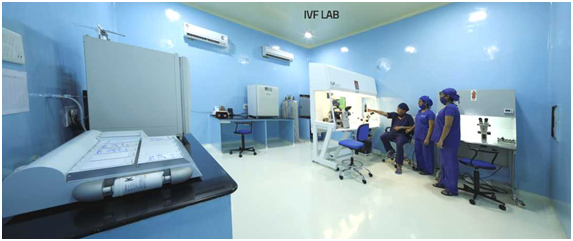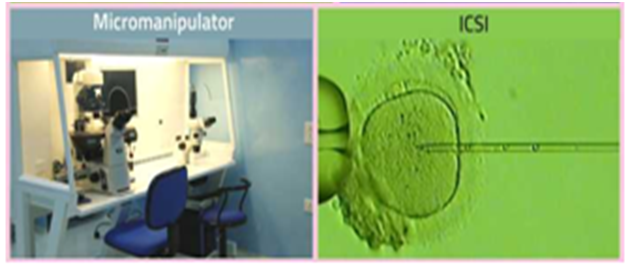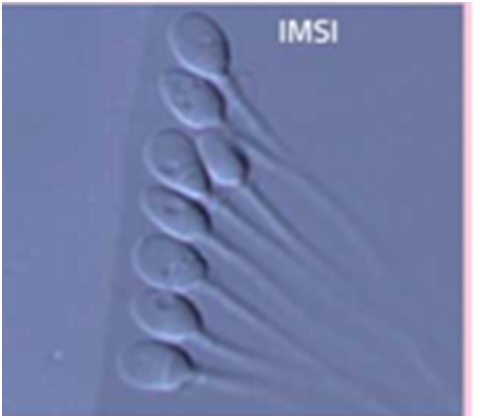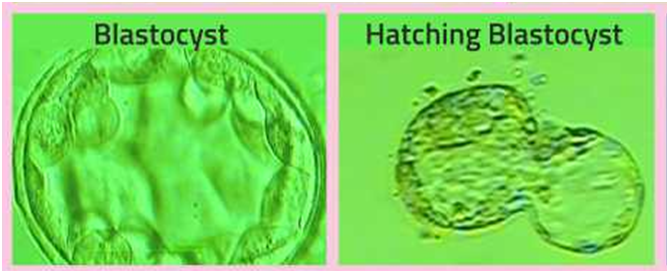IVF, ICSI-IMSI, Blastocyst Culture, ODP, Surrogacy, Embryo Freezing, Oocyte Freezing
Artificial Reproduction Technology (ART)

The ultramodern IVF Lab is a our pride. To watch video - Click Here
The highly specialized equipements and perfect designing of the spacious lab makes it one of the unique IVF Lab.
Salient Features of our IVF Lab -
- Advanced Instrumentation - Two HERA cell CO2 incubators, one MINC Bench top triple gas incubator, one Memart CO2 incubator and one K-systems Bench top triple gas incubator, IVF Tech Micromanipulator, Inverted Microscope.
- Walls, Ceiling and Floor of the Lab painted with anti-dust, anti-bacterial epoxy paint.
- There are no corners in the wall-ceiling and wall-flooring junctions. All are in round curved form which prevents the dust to accumulate.
- The lab is well conditioned by two AC's and a positive air presure machine.
- The lab has a 24 hr electricity backup facility.
- The most important element is Quality Control which is the key to our such high success rates.
Dr. Nitin Lad, the Embryologist has acquired advanced training in IVF for two years at the University of Singapore during his Masters in Clinical Embryology course. Dr. Nitin Lad has a wide experience of 25 years as an Infertility Specialist and ART Consultant.
The Process of Test Tube Baby Treatment - Click Here
IVF (In Vitro Fertilization)
In vitro Fertilization (IVF) or Test Tube Baby is a technique where the female eggs and male sperms are fertilized outside the body in a dish under controlled conditions and the resulting embryo is transferred into the uterus where it gets implants to achieve pregnancy.
The process includes 5 steps as follows -
- Controlled Ovarian Hyperstimulation (COH) - Developing more number of eggs in the ovaries by means of hormonal injection from day 1 or 2 till day 10 or 11.
- Oocyte Retrieval Procedure (OR) – Collecting the eggs under anesthesia by a needle attached to the probe using transvaginal ultrasonography.
- Sperm Preparation – The semen sample is washed and processed to obtain highly motile sperms with fertilizable potential.
- In vitro Fertilization – The sperm sample is then added to the dish with eggs (To watch video - Click Here.) The eggs and sperms are kept in the dish for fertilization under appropriate conditions. After 3 days, the resulting embryos are checked for its quality.
- Embryo Transfer (ET) – On day 5 all the embryos are analyzed and 2 – 3 best quality embryos are transferred into the uterus using a catheter under the guidance of abdominal ultrasonography on partial bladder. Transferring more than one embryo can lead to twins or triplets. The exact number of embryos transferred is a complex issue that depends on many factors, especially the quality of embryos, woman’s age, etc. Unused embryos may be frozen and implanted or donated at a later date.
ICSI (Intracytoplamic Sperm Injection)


Intracytoplasmic Sperm Injection (ICSI) is a part of the IVF treatment and it is indicated when the sperm quality is not good and not capable of fertilizing the egg. In ICSI, a single best quality sperm is selected under high magnification of 600x and it is injected into the egg using a small needle. This procedure is helpful for male patients with low sperm count and motility.
To see ICSI video - Click Here
IMSI (Intracytoplasmic Morphologically selected Sperm Injection)

Intracytoplasmic Morphologically selected Sperm Injection (IMSI) is a variation of ICSI where the sperm selection procedure is more advanced and done under very high magnification of 6000x. The selected sperm is injection into egg. This procedure is helpful for male patients with abnormal sperms.
Blastocyst Culture

- After fertilization, on day 3 embryo forms which resides in the fallopian tubes and not in the uterus under natural conditions. Therefore transferring embryo on day 3 in the uterus has subsequently less chances of survival and implantation. At day 5, the embryos grows in an advanced stage called Blastocyst which gets implant on the endometrium linning of the uterus. Therefore, in vitro culture conditions are maximized to obtain healthy blastocysts.
- Continuining the embryos to grow in vitro culture conditions requires high quality culture media to support the increased nutritional need of the growing embryo.
- Also the uterine linning on day 5 is receptive to the arriving blastocyst - this a more "natural" time for the blastocyst to be in the uterus. It is the same timing as with a natural pregnancy. A healthy blastocyst often begins hatching from its outer shell, called the zona pellucida between day 5 to day 7 after fertilization. Within 24 hours after hatching, the blastocyst invades into the endometrium linning. After implantation, the blastocyst releases hCG hormone (the pregnancy test hormone) which leaks into the mother's blood.
- Blastocyst culture provides the opportuinity to transfer the day 5 blastocyst just before the time for actual invasion and implantation.
- By culturing embryos to day 5 we will find that some of them have not become blastocysts - allowing us an opportunity to choose the most competent embryos for transfer.
- We can then transfer fewer embryos and still obtain high pregnancy success rates - with very little risk for having high order (triplets or higher) multiple pregnancies.
- To see the embryo grading - Click Here
Oocyte Donation Program (ODP)
- Age of female partner is one of the most critical issue in determing success of treatment.
- Females have reserve of 2 to 5 billions of oocytes at the time of birth. By the age of 12-14 yrs, it comes down to 2-3 millions and at the age of 40 yrs only 10,000 oocytes reserve is retained.
- Best reproductive age for woman is 20–24 yrs. As age advances ovarian reserve comes down and very drastically after age of 35 yrs. Due to civilization and career, today’s girl are entering wedlock at the age of 27–28 yrs.
- Naturally there are significant number of infertility patients who cannot conceive soley because of poor quality & less number of eggs. There are certain patients who don’t have ovaries (Turners syndrome) or have premature menopause at a very young age and cannot become mothers because of less eggs.
- For all these women Oocyte Donation Programme is a blessing. A healthy donor can donate her eggs and help the patient to enjoy the joy of motherhood.
Surrogacy
- In some infertility patients, uterus (where the baby gets implanted and grows) or endometrium is damaged, or uterus absent or is very small.
- The pregnancy is not achieved inspite of getting good quality blastocyst after IVF cycle.
- In such patients, the embryo of genetic parents is implanted in the womb of another healthy woman.
- The baby grows in the womb of surrogate (biological) mother for 9 months. The surrogate mother gives birth to the baby and as per legal provisions, baby is handed over to genetic parents.
- Surrogacy programme needs detail evaluation, extensive psychological counseling and legal support. It needs expertise in handling various protocols. We offer the best possible service in this programme.
Embryo Freezing
Dr. Lad's Navjeevan Hospital has a dedicated Freezing Room. To watch video - Click Here

- At Navjeevan we believe on blastosyst transfer and hence one / two best quality blastocysts are transferred.
- Excess blastocysts are frozen & can be used if index cycle fails or for next pregnancy
- 'Vitrification' is the method of choice for freezing embryos.
- Water is removed from the blastocyst and is replaced by cryoprotectant. And super–cooled at -196 degrees of temperature by dipping into liquid nitrogen. These embryos can remain frozen indefinitely.
- These frozen embryos can be thawed whenever required.
- To watch video - Click Here
Oocyte freezing
Excess of oocytes can be freezed and used in consequent cycle.
